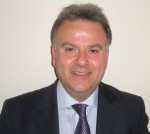
A study published today in BMC Medicine reports on thefirst investigation showing that platelet-derived growth factors are associated with fracture repair by recruiting mesenchymal stem cells. In this guest post, co-authors,Peter Giannoudis, Hiang Boon Tan and Elena Jones of the study explain the research.
There is increased interest in using stem cells for re-building tissues and organs damaged by trauma or disease. Stem cells are the predecessors of mature cells forming these tissues, and can be driven under defined chemical and biomechanical factors to form mature cells and the extracellular matrix, and thus make a replacement tissue mimicking the natural one.
In the last 10-20 years, major scientific and industrial effort has been directed towards developing technologies for expanding stem cells outside the human body but these technologies remain expensive and difficult to use clinically, not least because stem cells need animal-derived reagents to grow and these reagents can cause animal pathogen transmission to humans.
On the other hand, the behaviour of stem cells inside the human body, and their responses to injury or disease, remain poorly understood. For example, it is still unclear whether stem cells increase in their number after trauma and whether they can migrate, via bloodstream, to the damaged tissues and subsequently, rebuild them. Additionally, migrated stem cells can interact with tissue-resident cells and induce them to perform the necessary repairs. Although this has been proven to be true in some mouse model studies, small animal physiology differs significantly to that of humans.
Mesenchymal stem cells in trauma patients
In our study we investigated whether the severity of skeletal trauma is the factor influencing stem cell behavior in humans. We addressed this question by recruiting patients from two trauma groups (isolated trauma/damage to a single bone and polytrauma/damage to multiple bones) and also analyzed their bone marrow resident mesenchymal stem cells (MSCs) immediately after injury and a few days later.
We did not observe MSC release into the peripheral blood in both groups indicating that direct stem cell transit from the bone marrow to the damaged areas is unlikely. However, we observed that the features of MSCs post-trauma did change; they increased in numbers in direct relationship to circulating numbers of blood platelets and also they increased the abundance of the receptors to platelet derived growth factors on their surface. In other words, MSCs have ‘mobilized’ and acquired necessary ammunition to battle the damage soon after it has occurred.
As these events were taking place at a different site to injury, our data indicate that similar stem cell ‘mobilization’ could very likely take place at the site of damage and that the whole process may be controlled centrally via platelet derived growth factors and other yet unknown factors released into the blood. If these unknown factors are fully uncovered, it opens up a new opportunity to manipulate patient’s stem cells without taking them outside the body.
Research by the Leeds MSC group
The Academic Unit of Trauma and Orthopaedics at Leeds General Infirmary, headed by Professor Peter Giannoudis has long been an advocate of the diamond concept in bone regeneration. It promotes the requirement of a multitude of factors to be present to allow optimal bone repair process to occur. These four factors include the presence of regenerative cells (MSCs), appropriate growth factors to drive their responses, organic matrix or scaffold to ‘house’ MSCs and very importantly, a stable mechanical environment. In relation to this concept, the current study not only highlights and uncovers physiological behaviour of MSC post-trauma, it also suggests that the necessary growth factors could be taken out of patient’s own blood. Growth factors currently approved for their use in clinic, such as bone morphogenetic proteins, are produced by recombinant DNA technology (from Chinese hamster ovary cells), are expensive and not devoid of undesirable side-effects. Our study suggests that new technologies could be developed to produce these growth factors in bulk, for example in collaboration with national blood transfusion services.
The Leeds MSC group started in 2001 as collaboration between Dr Elena Jones (a stem cell biologist) and Professor Dennis McGonagle (a rheumatologist) who aimed to find the real identity of MSCs in human bone marrow. In 2002 they published a study describing how to find and isolate MSCs from human bone marrow without the need for their expansion in culture. This was followed by a number of articles investigating the nature of MSCs in joint tissues and different types of bones. Dr Hiang Boon Tan is an aspiring orthopaedic academic trainee who carried out the work contributing to the publication of the study described here as part of his post-graduate studies.
To summarize, following traumatic injury MSCs increase in numbers in direct relationship to circulating numbers of blood platelets. MSCs also increased the abundance of their surface receptors to platelet-derived growth factors. These alternations may be controlled centrally via factors released into the blood. Identification of these factors could open up a new opportunity to manipulate patient’s stem cells without taking them outside the body.
This work was made possible due to a unique collaboration between the Academic Unit of Trauma and Orthopaedics in Leeds General Infirmary and the Mesenchymal Stem Cell group located in Wellcome Trust Brenner Building, St James Hospital, Leeds. Both are part of Leeds Institute of Rheumatic and Musculoskeletal Medicine and have been supported by Leeds Musculoskeletal Biomedical Research Unit (LMBRU). LMBRU is an NIHR-funded biomedical research unit, which aims to bring together strong collaborations and top quality musculoskeletal research activities between the Leeds Teaching Hospitals NHS Trust and the University of Leeds. The Trauma Unit is a busy major trauma centre and tertiary UK referral centre for management of complex trauma cases; this was fundamental in order to ensure high-quality case admission and recruitment of patients into this study.
One Comment